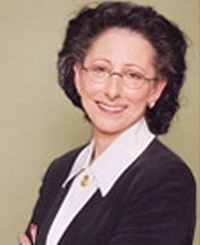How to Make – And Keep – Your Memories
As a Generational Coach and because of the my mother\’s dementia, I\’m
often asked by people who are concerned about their “intellectual
pauses” if there\’s anything they can do to remember more, longer, and
make their memories easier to access.
Please know that I\’m not a “brain specialist”. Nothing written here
should imply a diagnosis or a way to prevent Alzheimers or any of the
dozen or so other types of dementia. However, based on information I\’ve
learned through research, personal observation and experience, I say
Yes!
HOW WE MAKE MEMORIES
The brain is an incredibly complex organ composed of billions &
billions of microscopic neurons, or brain cells. All the physical and
mental tasks we perform (walking, singing, tying your shoes, and
thousands of other tasks) are carried out when these cells communicate
with each other. This communication is accomplished by a chemical
manufactured inside the cell that jumps the tiny gap between the cells,
called the synapse. The chemical connection (think of a microscopic
hair) creates a memory.
Memories are made through our five senses. Every time we hear, see,
taste, smell, and touch, we\’re making a “memory connection”. In
addition, the brain actually creates a new memory connection for every
sensory experience. If you say 1 word 10 times – you\’ve actually made
10 connections for that word. You probably have millions of connections
for your name.
Our earliest memories are created through the sense of touch, which has
2 parts. The first is tactile; the way something feels (a caress, the
texture of a blanket – or a hot stove). The second is kinesthetic,
sometimes called “muscle memory”. We make kinesthetic memories the same
way you get to Carnegie Hall . . . practice, practice, practice! It\’s
how pianists play without looking at the keys, how dancers remember
routines, and how we remember how to tie our shoes.
Sight is our strongest sense for short term memory. In fact, 73% of our short term memory is through what we see.
Hearing, on the other hand, is the least reliable of the senses.
We may have great memories for music or the sound of someone\’s voice
but most of what we hear are abstract “facts” such as names and numbers
which lack an emotional context.
If you\’ve ever tasted something and asked yourself what\’s missing, it\’s
because of a taste memory. A few years ago, some restaurants started
featuring “comfort” food (such as meat loaf and macaroni & cheese).
It sounded like a good idea but it didn\’t work because the food didn\’t
match the memory of the way “Mom used to make it”.
While sight is the strongest sense for short term memory, the sense of
smell is the strongest and most vivid for long-term memories. If you\’ve
ever smelled something and had memories you hadn\’t thought of in years
come flooding back – thank your sense of smell.
And, each of the senses makes its own connection even for the same
experience! When you see a rose and stop to smell it, you\’ve doubled
your memory of it!
Researchers also believe that our brain processes and stores memories
of emotion differently from the way it stores memories of fact and that
we remember emotional memories far longer than fact memories. The
memories of Thanksgiving dinners, lullabies your mother sang to you,
your wedding, your child\’s first words, the first time you successfully
rode your bike without training wheels, your old boyfriend\’s
aftershave, your first kiss, flowers on Valentines Day are all made
stronger because of the combination of the senses plus the emotional
connection.
HOW WE RECALL MEMORIES
We make memories through our senses and it\’s through those same senses
that we recall or “trigger” these memories. Dementia – regardless of
the cause – blocks the connection, preventing one cell from
communicating with another, the way an accident blocks traffic on a
highway. The more connections you\’ve made for an experience, the more
alternate routes you\’ll have to recall or trigger that memory.
My mother has very advanced dementia but she can still remember dozens
of old songs when the music triggers her memory. My great grandmother
died when I was five years old but to this day, whenever I smell
lilacs, I have vivid memories of her and the lilac sachets in her
lingerie drawer. If I can\’t remember a phone number, I place my fingers
on a phone key pad and let my fingers “remember” for me. The smell of
the sea air, the sound of the wind, the taste of your mother\’s
meatloaf, the sight of a sunrise, the feel of a baby\’s skin are all
triggers we created through our emotional and sensory experiences.
In addition, every time we think, write, and/or talk about an
experience, we make even more memories – and more triggers by which to
recall them.
YOUR “BETTER MEMORY” ASSIGNMENT
When doing routine tasks, challenge yourself to be aware of all of your
senses like the taste, feel, smell, and sound of brushing your teeth.
Consciously add additional senses to your experiences. For example,
revel in the taste, smell, look, and feel of eating something delicious
and when you turn on some music, get up and boogie!
Make a point to explore new things and/or do things you haven\’t done in
years. When you walk on the beach, notice the feel of the sand between
your toes, the heat of the sun, the heavy summer air, the color of the
sky, and the sound of the birds! And include your family and friends.
Not only will it create fuller memories for you, it will give them
wonderful memories, too.



Leave a Reply
You must be logged in to post a comment.